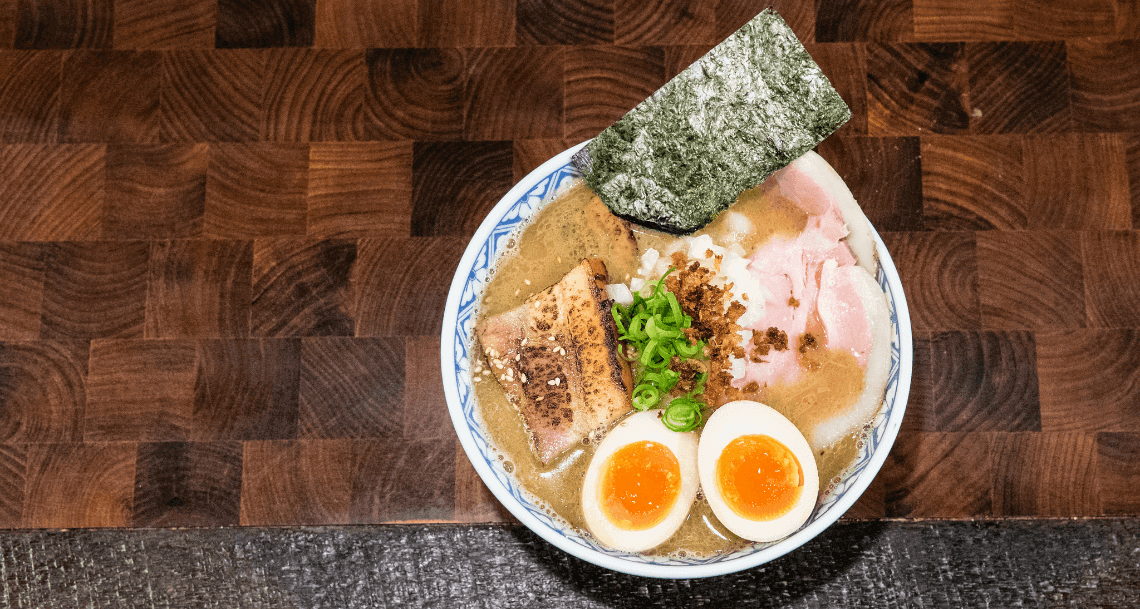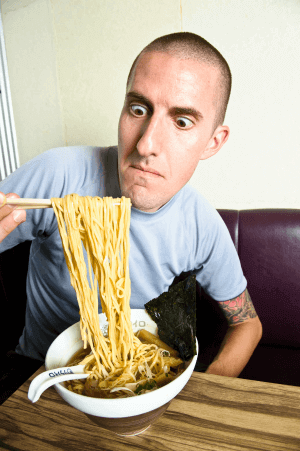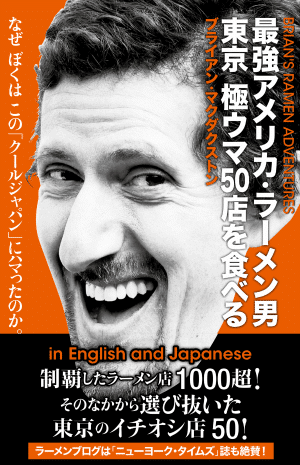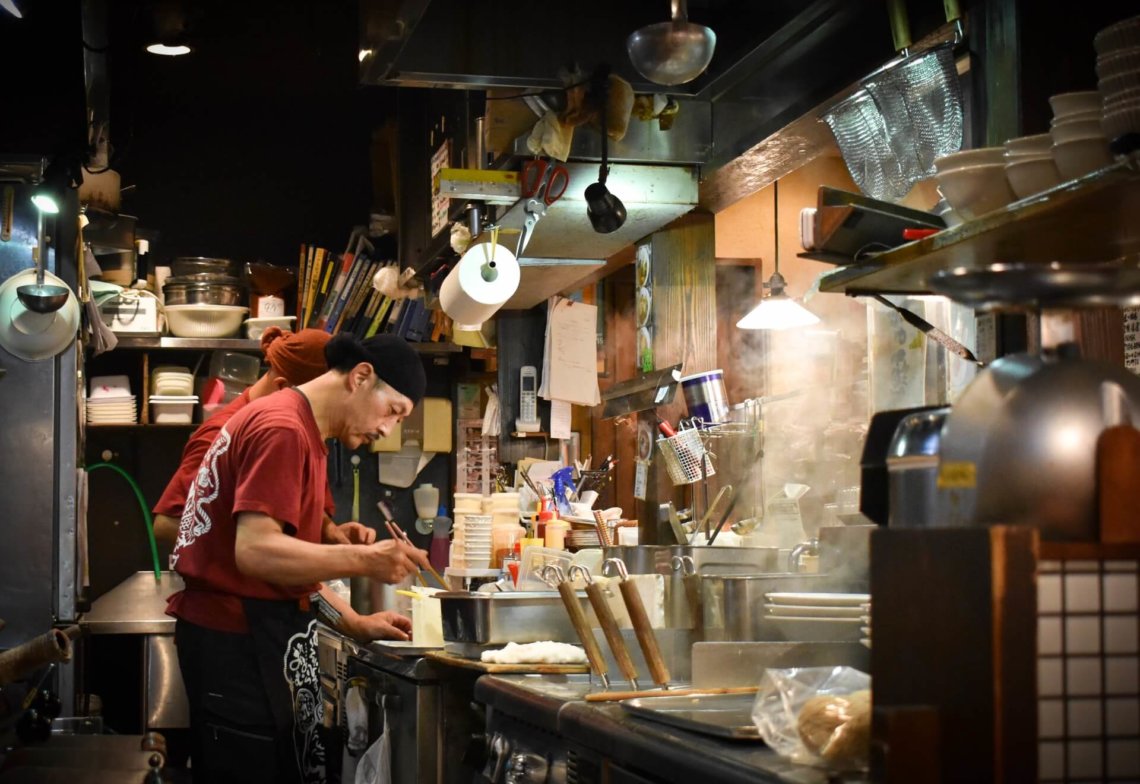If you’re looking for the best ramen shop in all of Japan, you may be embarking on a lifelong quest.
Along with sushi, ramen is the Japanese food you’ll find on the must-eat list of nearly every traveler to Japan (for more foods, see our full post on Japanese culinary experiences).
But asking which ramen-ya (ramen shop) has the best ramen in Tokyo (or Japan) is akin to asking which pizzeria in New York has the best slice, or which taqueria in Mexico City makes the best tacos.
It’s not just up for intense debate, it’s basically a ridiculous, unanswerable question — though fun to consider regardless!
Originally written in 2015, this post was updated and republished on November 18, 2020.

The Modern Ramen Boom
Despite ramen’s rising reputation, until fairly recently the word ramen (at least outside of Japan) was synonymous with instant ramen: the iconic Cup Noodles made famous worldwide by now-legendary Osaka entrepreneur Momofuku Ando.
Then the modern ramen boom began.
Much like sushi before it, shops specializing in ramen began to pop up in cities around the world. Nowadays, even non-foodies have come to realize that ramen can be much more than a cheap and convenient means of sustenance (though you’ll also find an astounding variety of instant ramen at convenience stores in Japan).
While some ramen evangelists — most notably chef David Chang — have proclaimed ramen to be “dead,” for noodle-lovers in Japan and worldwide it’s fair to say ramen is better than ever.
Interview with Brian MacDuckston of Ramen Adventures
To talk ramen, we spoke with Brian MacDuckston, the Tokyo-based founder of Ramen Adventures.

Brian is a prolific writer on all things ramen, the author of a bilingual English/Japanese guide to 50 Great Tokyo Ramen Shops, and a private guide offering ramen tours of Tokyo.
If you’re visiting Japan and planning to eat some ramen — or simply want to learn more about noodles, broth, and ramen etiquette — we hope this interview helps your next bowl taste that much better.
Welcome, Brian-san!
Andres Zuleta (Boutique Japan): Before we get into noodles and broth, let’s start with a bit of your story: how did you end up going down this ramen road?
Brian MacDuckston: Back in 2006, I was living in the US and essentially I burned out of computer work (the work I was doing at the time). I hated it and I was miserable, and instead of just taking a vacation I thought, “You know, maybe I can go and live in Japan for a year.” It was super easy at the time (and even now), to get a one-year contract at a language school.
Were you based in Tokyo at the time?
Not far. I was living in Kawagoe (in Saitama prefecture, just north of Tokyo), and then I moved to Hiroshima for about six months.
But the whole time I wanted to live in Tokyo, so finally when my contract ended I just moved here and started looking for work. I had some money to survive, so I picked up some small jobs at the start, but mostly I had a lot of free time – and that’s how the ramen started.
So one fateful day you had some life-changing ramen, and here we are?
I just had a regular blog, you know, where I would post things about my life in Japan. One day I went to this ramen shop in Ikebukuro [a Tokyo neighborhood] with a long line, and it was really good. And I thought, OK, I want to find more places like this.
I started posting all this ramen stuff on my regular blog, and people started saying, “All you do is post ramen photos!” So I just decided to make the ramen site. I didn’t have any grand plans for it.

When did you realize ramen could be more than just a hobby for you?
I started meeting other ramen bloggers, and then I got a call from The New York Times. One of their travel writers, Matt Gross, was coming to Tokyo for a week and wanted me to help him out (read the article here). Of course I said yes, and then that kind of propelled stuff.
Overseas it didn’t get picked up as much, but in Japan a few magazines picked it up, and from there I started getting TV offers and a lot of interviews. I started taking it a bit more seriously after that, because people were genuinely interested in it.
And of course this leads us to your ramen book. How did this come about?

It’s always been something that I wanted. I’m connected with all kinds of ramen people here, and some guys had a contact at a Japanese publisher. We set up a meeting, and since I basically had the data ready to go, they said, “Let’s do it.”
Let’s talk Ramen 101. With so many kinds of ramen – not to mention regional variations – how do you normally explain the different types of ramen?
It’s a tough question because some people say there are like 150 varieties, some people say there are 26, and then there are some people who say 4.
26 is the number of regional varieties according to the Yokohama Ramen Museum, but then there are super minor regional varieties, where they’ll tweak something slightly and then make it a local thing.
But I like to put it into just two categories, which is usually how I do my tours. There are clear soups and thick soups.
Clear soups are your shoyu (soy sauce) or shio (salt) base, where it’s a lighter, clear soup. And of course thick ones are cloudy, heavier soups.
People who visit Japan are limited for time, so I always say get one of each and that’s your introduction to ramen in Japan.
Tell us a bit more about the thicker, cloudier soups.
When you cook bones at high heat for a long time, it draws the collagen out. That’s what makes the soup cloudy and thicker.
There’s tonkotsu ramen, which is mostly pork bone based. A lot of people know Ippudo. This is the one that’s probably the most popular overseas because it’s such a new taste – and it’s so good.
Miso ramen is also thicker, and in Tokyo a big one is tonkotsu gyokai tsukemen. It’s a really thick pork-based soup, and then you add in fish products – dried skipjack tuna, dried sardines, all kinds of dried stuff from the sea. It has this really crazy umami flavor going on.

This brings up an interesting question: what makes ramen ramen, and how strictly do people define it?
Modern ramen is a new idea. It’s fifty or sixty years old, and there are really no strong rules.
People love to debate and be smarter than everyone else, but really for me the noodles need to be ramen noodles, Chinese-style noodles — basically flour, water and kansui [potassium carbonate and sodium bicarbonate solution] — as opposed to egg noodles.
And the broth?
You could put anything in the broth, but generally a meat-based soup is ramen. To make it further Japanese, you’re using some dashi to flavor it as well. You’re using kombu and maybe some bonito. You’re using things to get that umami flavor, which you don’t get as much of with Chinese-style noodles.
Broth and noodles are both essential, but which do you see as more important to a good ramen?
Ramen is about balance. Of course, it’s the balance of the soup and the noodles and the toppings. But I think most people (myself included) feel that the soup is the most important part of ramen.
In Japan, you can get top-quality noodles from a noodle company that will be fantastic. Of course, there are shops that make their own noodles, and you notice it. But really for me, it’s the soup that sets shops apart from each other.

Aside from people who think ramen is just instant noodles, what is the biggest misconception you see among non-Japanese when it comes to ramen?
The biggest misconception is that it’s fast food and it’s cheap. A lot of people equate ramen with being cheap food. It’s a problem, especially in places like New York, where people see a bowl of ramen for $15 and think, “This is absurd.”
The preparation of ramen takes vast amounts of time. The soup can take days, and prepping the noodles and everything else – it’s really labor intensive. But when you go to a ramen shop it comes out to you quickly, so people kind of equate it with being a fast food.
They’ll pay $20 for a pasta dish at an Italian restaurant, but then see ramen for $15 and think it’s overpriced.
Ramen restaurants in the US or elsewhere have a very different feel from those in Japan. Talk a bit about what it’s like to actually go to a ramen shop in Japan.
A great thing about eating ramen in Japan is that a lot of shops have the ticket machine: you just go in, get your ticket and sit down.
They’ll ask for your ticket, but essentially tourists can get away without any grasp of the language.
When you walk in they’ll usually yell out, “Welcome to the shop!” You give them your ticket and then whoever takes your ticket might yell out what your order is.
Then whoever is on the noodles — or different prep — is going to repeat that, and they’ll also yell it out. At shops with two or three employees, they’re just yelling at each other basically to keep the pace going. The pace is very, very important in ramen shops – I’d say more so than at any other type of restaurant.
It can appear a little daunting because the shops are noisy and boisterous, but I think once you get over that initial fear it’s no problem.

What are some ramen etiquette dos and don’ts, and the most common “mistakes” you see tourists make?
Most people know about slurping. Slurping definitely improves the flavor and cools the noodles down.
But the biggest thing — the number one rule — is eat quickly. Don’t eat too fast, but generally speaking you should be done with your ramen in between 5 and 10 minutes. Essentially you get it, eat it, and then get out. Don’t sit around chatting for 20 minutes.
For one, the noodles start to get soggy – people put it at like eight minutes, that’s the golden number. In the States, I’ve seen people get their bowl, and then they’ll take some pictures, and walk away, go to the bathroom, come back. Fifteen minutes later, they’ll start eating. You’ll just ruin your ramen.
Also, if you’re taking your time at a shop with a line, you’re inconveniencing other customers — not to mention the shop, which relies on customers to eat quickly and go.
[See our guide to sushi etiquette.]
In your opinion is Tokyo the best ramen city in Japan?
By far. It’s cool to go out to the small cities that have their own unique styles, but as far as variation, Tokyo has the biggest variety.
You go to a place like Hakata [aka Fukuoka] and there’s great tonkotsu ramen. There are all these street stalls and the ramen culture is absolutely amazing, but you don’t have that variety, so for me it’s got to be Tokyo.

But if you’re into tonkotsu then you have to make a pilgrimage to Hakata.
Oh, man. Yeah, if you want to do it proper, it’s epic.
What are your thoughts on a place like Tokyo Ramen Street?
Tokyo Ramen Street is awesome. It’s such a cool concept. They’re all very good shops there, and it’s super easy for people to just roll in there.
Your ramen “last meal” – where and why?
There are many amazing shops in Tokyo, but maybe it would be Ore No Appare, a shop near Kyoto. Very far from anything, and one of the best shops in the country. It would mean a day of riding my motorcycle in the Japanese countryside for an amazing bowl.
Thanks so much for your time!
If you have more unanswered questions about Japan, we put together a complete list of the most common questions travelers ask about Japan.

This Concludes our Ramen Adventure
We hope you enjoyed our noodly chat with Brian-san, and that you’re inspired to get out there and eat some more ramen yourself, whether in Japan or elsewhere in the world!
Make sure to check out Brian’s fantastically informative sites, Ramen Adventures and Best of Ramen, as well as his YouTube channel — and for more inspiration also see our guide to Tokyo’s best historic ramen shops.



